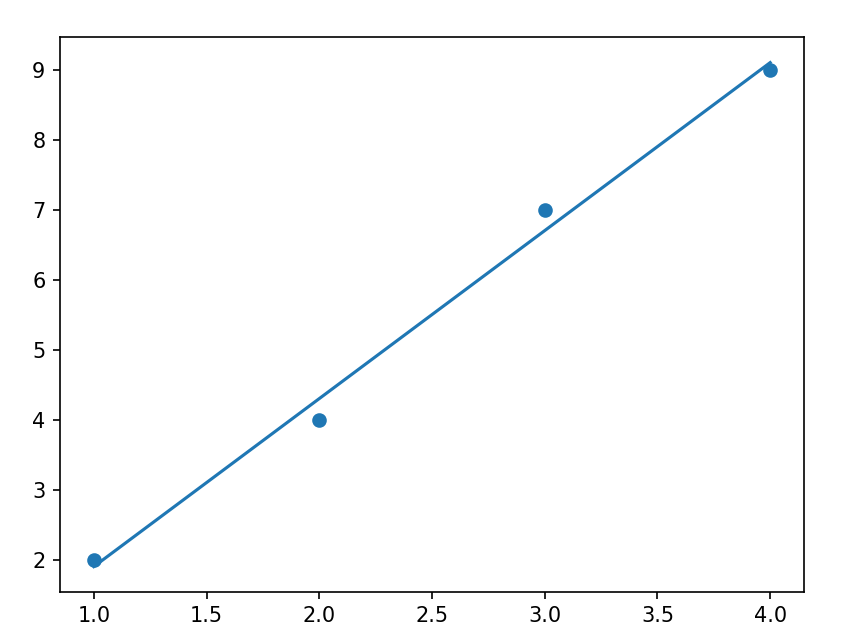时间序列分析 - 线性回归和多项式回归
本节涉及的概念我们大多熟悉,故不阐述原理,只记录使用
sklearn进行线性回归和多项式回归的操作
一元线性回归
from sklearn.linear_model import LinearRegression
x = np.array([1, 2, 3, 4])
y = np.array([2, 4, 7, 9])
X = x[:, np.newaxis]
model = LinearRegression().fit(X, y)
yhat = model.predict(X)
plt.scatter(x, y)
plt.plot(x, yhat)
plt.show()
print(model.coef_[0], model.intercept_)

多元线性回归
df = ...
X = df.iloc[, :-1].values # 转换为 ndarray
y = df.iloc[, -1].values
model = LinearRegression().fit(X, y)
print(model.coef_[0], model.coef_[1], ...)
print(model.intercept_)
多项式回归
from sklearn.preprocessing import PolynomialFeatures as pf
trans = pf(degree=2, include_bias=False)
X2 = trans.fit_transform(X)
model = LinearRegression().fit(X2, y)
...
时间序列分析 - 线性回归和多项式回归
http://localhost:8090/archives/bRlSRg3S